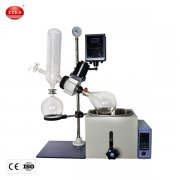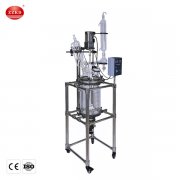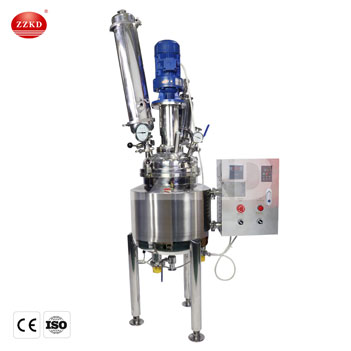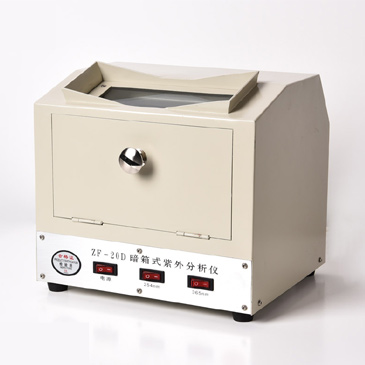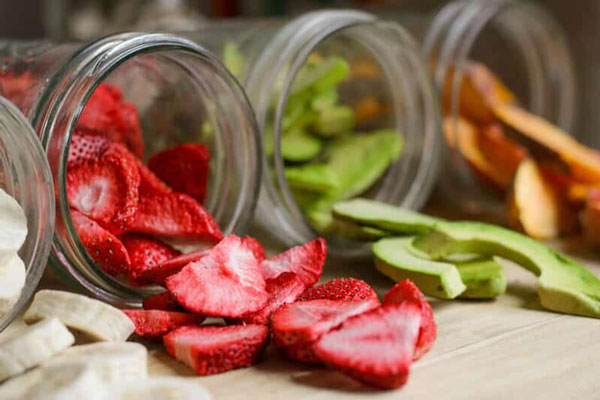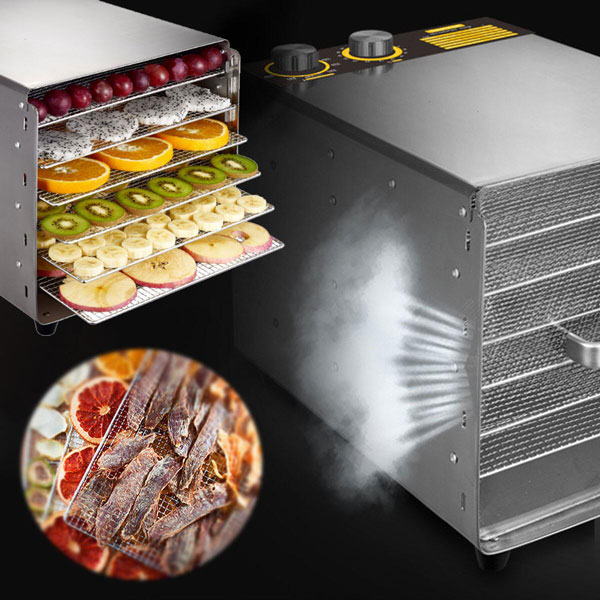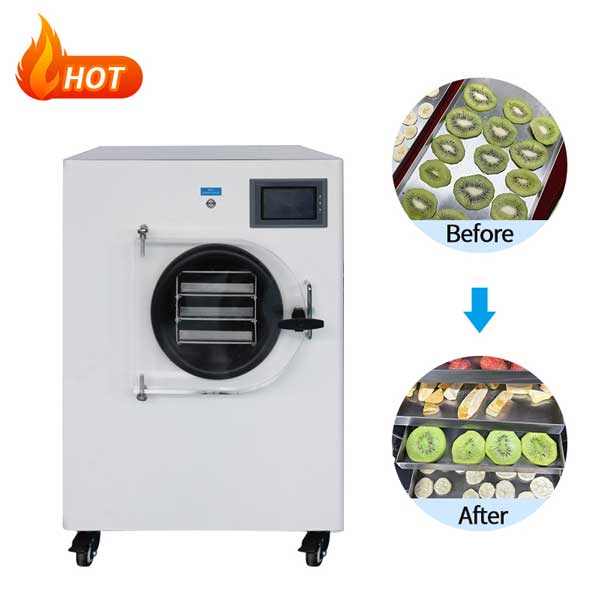Drying is one of the ways to prevent substances from going bad. There are many drying methods, such as sun drying, boiling drying, etc. However, these drying methods are carried out at temperatures above 0°C or higher. The dried product generally has a reduced volume and a hard texture. Some substances are oxidized, and most of the volatile components are lost. Some heat-sensitive substances, such as proteins and vitamins, will be denatured, and microorganisms will lose their biological vitality. The dried substance is not easy to dissolve in water, etc. Therefore, the dried product has a great difference in properties compared with that before drying.
The
freeze dry candy machine is different from the above drying methods. The drying of the product is basically carried out at a temperature below 0 °C, that is, the product is frozen. Until the later stage, the residual moisture content of the product is further reduced. to a temperature above 0°C, but generally not exceeding 50°C.
Working principle of mini freeze dry machine:
The substance is always at a low temperature (frozen state) before drying, and the ice crystals are evenly distributed in the substance. The sublimation process will not cause condensation due to dehydration, and avoid side effects such as foaming and oxidation caused by water vapor. The dry substance is porous in the form of a dry sponge, the volume is basically unchanged, and it is easily soluble in water and returns to its original state. Physicochemical and biological denaturation of dry substances is prevented to the greatest extent possible.
(1) Freeze the item to be dried to below the triple point temperature, and then directly sublime the solid water (ice) in the item into water vapor under vacuum conditions, remove it from the item, and dry the item.
(2) After the material is pre-treated, it is firstly frozen, then vacuum-dried, sublimated and dehydrated, and then packaged in the post-processing workshop.
Notice! The vacuum system establishes low pressure conditions for the sublimation drying chamber, the heating system provides the latent heat of sublimation to the material, and the refrigeration system provides the required cooling capacity to the water catcher and the drying chamber.
The following steps are the working process of the freeze dryer:
Preparation And Pretreatment
↓
Pre-frozen Solidified Water
↓
Primary Drying
↓
Secondary Drying
↓
Package
1. Preprocessing
It includes any method of processing the product before freezing. This may include concentrating the product, modifying the formulation (ie, adding components to increase stability and/or improve processing), reducing high vapor pressure solvents, or increasing surface area. Pretreatment methods include freeze concentration, liquid phase concentration, formulations that maintain product appearance, formulations that stabilize reactive products, formulations that increase surface area, and lowering of high vapor pressure solvents.
2. Pre-freezing:
The product should be frozen at a temperature low enough to fully solidify. Since
mini freeze dry machine is a state change from a solid phase to a gas phase, the material to be freeze-dried must first be sufficiently pre-frozen. The pre-freezing method and final temperature of the frozen product can affect the ability to successfully freeze the material. Rapid cooling produces small ice crystals that can be used to preserve structures that will be examined under a microscope, but it produces a product that is more difficult to freeze-dry. During drying, slower cooling results in larger ice crystals and less restricted channels in the matrix. Products are frozen in two ways, and most freeze-dried products consist primarily of water. Most samples to be lyophilized are eutectic, which are mixtures of substances that freeze at a lower temperature than the surrounding water. It is very important in lyophilization to pre-freeze the product to a temperature below the eutectic temperature before starting the lyophilization process. The second type of frozen product is a suspension that forms glass during the freezing process.
3. Primary drying:
After pre-freezing a product, conditions must be established so that ice can be removed from the frozen product by sublimation, resulting in a dry, structurally intact product. This requires very careful control of two parameters: the temperature and pressure involved in the lyophilization system. The sublimation rate of the frozen product depends on the difference in the vapor pressure of the product compared to the vapor pressure of the ice collector. Molecules migrate from high pressure → low pressure region. Since vapor pressure is temperature dependent, the temperature of the product must be higher than the temperature of the cold trap (ice collector). The temperature at which the product is lyophilized strikes a balance between a temperature that maintains the freeze integrity of the product and a temperature that maximizes the vapor pressure of the product. This balance is the key to optimal drying.
Heat enters the product through one of several mechanisms:
(1) By direct contact between the bottom of the container and the shelf or
(2) Conduction through the bottom of the container and then through the frozen material to the drying front or
(3) By gas convection between the product and residual gas molecules in the chamber or by radiation.
4. Secondary drying:
After primary freeze-drying is complete, all ice has sublimated and bound moisture is still present in the product. Product appears dry, but residual moisture may be as high as 7-8%. Continued drying at higher temperatures is required to reduce residual moisture content to optimum values. This process is called "isothermal desorption". The time for secondary drying is usually about 1/3 or 1/2 of the time required for primary drying.
5. Packaging:
The bottles and vials are closed by replacing the vacuum with an inert gas.

 Products
Products





